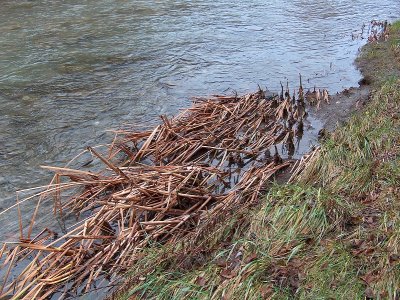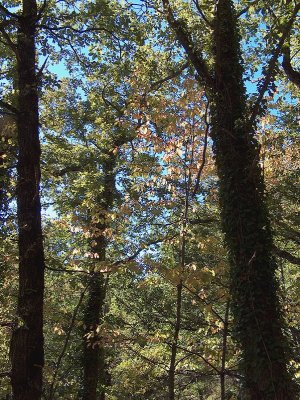Riverside woodland
Riverside woodland is a complex frontier system, where many organisms from both aquatic and land environments find food and shelter. The branches and crowns must not let us forget the roots, which intercept transversal underground currents of water.
1/8 < >

Riverside vegetation moderates the current, stabilises the structure of the river banks, filters sediments and absorbs nutrients from the river, or from the neighbouring meadows and fields. In summer, the shade projected onto the water creates temperate environments and attenuates heating by the sun.

Vegetation that lies in the direction of the current is evidence of small recurring floods. These floods leave materials right up to the flatter areas, with a tamed water course. The nutrients that circulate in some places are retained in other more sheltered places.

Developed and mature riverside forest may come to be dense and quite tall. Willows form the first line along the waterside, followed by alders and poplars, and climbing among their branches we find lianas, clematis and some brambles.

On open areas that are fairly flat, willows become more common. There are two or three willow species coexisting here. The abundant thin, flexible branches of these trees (switches) have been used since time immemorial as wicker for making baskets and light furniture.

In Gerri, the riverside forest is not very highly developed.

In the village of Gerri, riverside vegetation is often forced to live in a very narrow space between the water and the retaining walls that protect the salt beds.

In Gerri, while the salt works were in operation, the river banks were kept free of riverside vegetation. The shade from the trees would have been bad business for salt production.

From the time when the salt beds were no longer maintained, the riverside forest has gradually recovered all along the river as it passes through Gerri.







